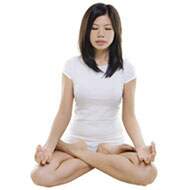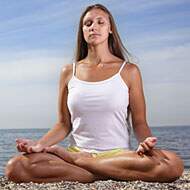Techniques And Benefits of Pranayama
Pranayama is traditionally viewed as a practice involving a lot more than just breathing for relaxation. It is a term having a broad range of meanings and connotations.
It also stands for cosmic power, or power of the whole entire universe that reveals itself as a conscious living entity in us through the miracle of breathing. The sage Patanjali, in Yoga Sutras, defines Pranayama as “regulation of incoming and outgoing breath coupled with retention.
In Sanskrit, the word Pranayama is composed of two parts, viz. Prana and Ayama. The latter means control; it describes the action of Pranayama. Prana – that most people are unaware of – is vital energy. It is that energy that manifests itself as the self-energizing force embracing one’s body. When this force enfolds the entire body with control, it is called Pranayama.
The goal of Pranayama is not to bring the inhale and exhale into a particular relationship with each other. Nor is it to set up a particular length of breath. The different pranayama practices render lots of sundry possibilities for following the breath, as well. When you follow your breath, your mind is drawn into activities of your breath. Pranayama prepares us, in this manner for the stillness of meditation to come.
Pranayama benefits
Pranayama refers to the breathing technique in Yoga, which can work wonders in improving the overall health and the function of all the organs in the body. Pranayam is also closely linked to meditation, a crucial aspect of yoga.
Several health experts also refer to Pranayama as the art of effective breath control. Practicing the proper techniques of breathing can help you become more aware of your breath and therefore pranayama benefits are physical, emotional as well as spiritual. Some of the most common pranayama benefits are:
• Improvement in the rate of breathing
• Reduction in the heart rate as well as the wear and tear of the heart
• Helping the body get rid of excessive fat and weight
• Curing problems that are related to the digestive system
• Enhancing the functioning of several organs, which include the kidneys, pancreas, intestines, diaphragm, lungs and the heart
• Removing the toxins from within the body
• Preventing various diseases by strengthening the immune system
• Getting rid of negative emotions like depression, anger, arrogance, greed & so on
• Improving the circulation of blood throughout the body
• Reducing blood pressure, by relaxing the body and soothing the nerves
Pranayama for weight loss
People often exercise in order to lose weight faster, because exercising regularly in the right manner can help increase the metabolism in a person, which further helps in burning off more calories. Pranayama can have a similar effect on your body. It is important to realize that the process of weight loss through Pranayama or most other yoga forms slow and gradual. However, when pranayama is modified by several levels, it can help facilitate weight loss at a faster rate. It is important to learn the various Pranayama breathing techniques through a well qualified Yoga guru or teacher. Practicing this technique in the wrong way may have an adverse effect on the body. It is best to practice the 7 basic pranayama exercises before practicing other yoga poses. Techniques like Alom Vilom, Kapalbhati and Bhastika are believed to be the key factors in weight loss and should be practiced regularly. Just practicing these three breathing techniques for one hour on a daily basis could help you lose up to 25 pounds in a month. However, there are several other factors that could influence the amount of weight lost.
Before practicing the Pranayama or any other form of Yoga, it is best to consult a doctor, especially if you are suffering from any medical conditions.
Anuloma Viloma: How Anulom Vilom Will Help Me For Weight Loss?
Anuloma Viloma or Alternate Nostril Breathing is a breathing exercise in which you breathe in through one nostril, hold your breath, and breathe out through the other nostril in the ratio of 2:8:4. Regular practice of Anuloma Viloma along with some yoga poses can help get rid of the fat deposits all over the body, not just a specific area. Padmasana (Lotus Pose) is a sitting posture that requires your hips to be open and should be consistently practiced. It is very effective in aligning the chakras. Bhramari is considered to be the best breathing exercise for meditating. It relaxes the mind and reduces high blood pressure, fatigue and stress.
Kapalabhati Pranayam : What is Kapalbhati? How to do it?
Kapalabhati is related to the process of breathing, but is not a kind of Pranayama. Beginners can perform this breathing exercise for three minutes and gradually increase it to five. Some of the benefits of Kapalbhati are bringing stability and peace to the mind, purifying the chakras, and improving the function of the abdominal organs. Another effective breathing exercise you could try is Anuloma Viloma or Alternate Nostril Breathing. This breathing technique is done by breathing in through one nostril and releasing the breath through the other. It is considered to be very beneficial for individuals suffering from allergy, sinus, high blood pressure, depression, and heart blockages.
What are Pranayama And Kapalabhati Benefits?
The aim of pranayamas is to bring the involuntary functions of the mechanism of respiration under control. Individuals who practice pranayamas will have good strength, courage, enthusiasm, and good appetite. Some of the pranayama benefits are maintaining a blood pressure level that is healthy, increasing the supply of oxygen to the brain, and reducing stress. Some of the Kapalabhati benefits in particular are in helping with obesity, indigestion, and other diseases related to the abdomen. Practicing meditation regularly can provide you with a lot of benefits. Some of the meditation benefits include decreasing the rate of respiration, building self-confidence, and helping with chronic diseases like arthritis and allergies.
Suryabhedana Yoga : What is Suryabhedana breathing?
Suryabhedana yoga breathing exercise helps in stimulating the solar nadi or the nerves that the sun controls. In Suryabhedana, the nostril used for inhalations is only the right one. When performing Suryabhedana, you should inhale through the right nostril and forcefully breathe out through the left. During the retention, you should feel the prana filling the whole body. The Suryabhedana breathing exercise should not be performed during the summer, albeit those living in cold countries can perform it in summer as well. Practicing Suryabhedana helps in increasing the gall flow and reduces gas and phlegm. It also increases the warmth of the body and gives energy.



